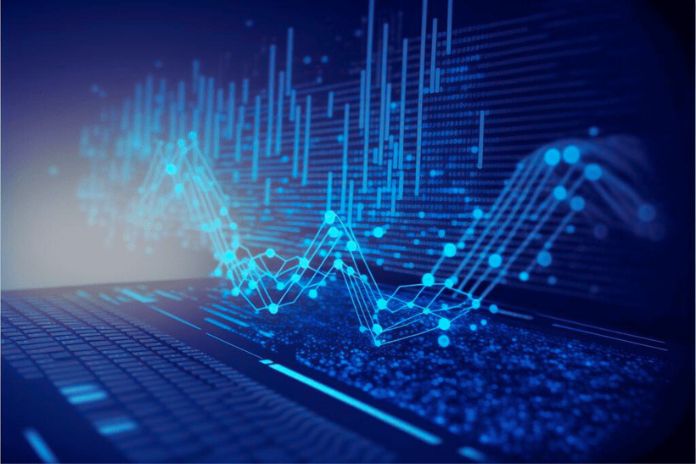Business Intelligence and predictive analytics are closely linked. In a nutshell, the information processing strategy allows the company to identify opportunities with much more precision.
It gives BI a competitive advantage compared to other ways of obtaining strategic insights in the corporate environment. Continue reading better to understand Business Intelligence’s relationship with predictive analysis.
What Is Predictive Analytics?
Predictive analysis is nothing more than using statistical algorithms, data and machine learning techniques to identify the probability that future results will happen (always based on historical data). It is, therefore, a business intelligence tool for making predictions!
This type of analysis is done when the manager needs to make a future decision about the results of a specific action in the present. For example, imagine your company launching a product on the market, and you want to direct resources to exactly what will please your target audience. This is the function of predictive analysis: it identifies trends and understands and predicts consumer behaviour. This information is essential for decision-making to be as accurate as possible, thus drawing up an assertive plan.
Predictive models use already-known information to develop a specific model that can be used to predict new or different data. Its main objective is to go beyond reports and descriptive statistics to assess future events objectively.
Predictive analysis results are prediction models that represent the probability of the target variable based on its importance based on a set of input variables. Consequently, decision-making is simplified, and insights are generated, which are used to improve actions.
How Does It Work In Practice?
Predictive analysis is used by different companies, from the most diverse segments, which aim to predict a situation or market trend. Companies may also wish to develop a strategy to contain problems or take advantage of current opportunities.
With it, the ability to make more correct and coherent decisions increases considerably, making forecasting quick and accessible. However, this type of analysis only has practical functionality if the data obtained is used by the company in planning and decision-making.
What Are The Benefits For The Company?
But is it worth it? With everything you’ve read so far, you couldn’t imagine any other answer than yes, right? But what are the benefits? Check them out below!
Marketing
As we have said before, predictive analysis allows the target audience’s preferences to be identified by developing specific marketing actions. This business intelligence tool leads to a better understanding of customers, as it cross-references various information to identify a particular profile.
Predictive models also help when it comes to attracting new consumers. Retaining the most profitable ones and directing resources correctly without wasting money on unnecessary actions is possible.
Risk Analysis
One of the most common applications of predictive analytics is credit scoring. It is used ubiquitously to evaluate the probability of default by a given potential customer — regardless of the product type.
A credit score is represented by a number generated by a predictive analytics model incorporating relevant customer data. Thus, it generates concrete information, which makes it possible to check the consumer’s situation and predict what they will be like in the future.
Operations Development
Predictive analysis is also present in company operations, allowing them to develop their activities efficiently without needing constant rework. The model is also used to predict stock flow and manage resources.
This predictive analysis function can also be used for more specialized needs. Airlines, for example, use this tool to decide how many tickets will be sold for each price range on a flight.
Security
As predictive analytics makes predictions about specific activities, it can help close losses due to fraudulent actions, as they can be detected before they happen. Combining several inspection methods makes it possible to obtain even more precision and better predictive performance.
With this tool, it is possible to analyze data from all activities carried out by the company on a network in real time, detecting abnormalities that may indicate vulnerability, threats or suspicious activities.
How Is Predictive Analysis Applied In Real Cases?
Now that you know everything about predictive analysis, how about finding out how this business intelligence pillar can be applied in real cases in companies? Let’s go!
Bank Services
Predictive analysis detects and reduces credit card fraud, maximizes sales opportunities and customer retention, and optimizes marketing campaigns. Some systems use high technology, safely predicting user actions that could result in budgetary problems.
Insurance Companies
These companies use predictive analysis to determine the rates for the insurance they offer. They also analyze possible fraud, optimize complaints processes, improve profitability and promote more efficient marketing campaigns.
Health Area
The health sector uses this tool in several sectors, for example, to predict the effectiveness of new procedures implemented and the optimization of services provided by professionals, providing patients with effective and safe care.
But that’s not all: predictive analysis is also used to detect bottlenecks in procedures that deal directly with the public, such as health insurance. In this way, it is possible to evaluate the complaints made, identify the level of patient dissatisfaction, and determine which interventions are necessary or make the most sense for the scenario in question.
Media
Deepen knowledge about the public, identifying which trends, attributes and desires are influential: this is possible with predictive analysis. This tool is also used to check the daily performance of specific media and entertainment activities, in addition to the preferences of its users.
Also Read: Google My Business: How Can This Tool Help Your Business












